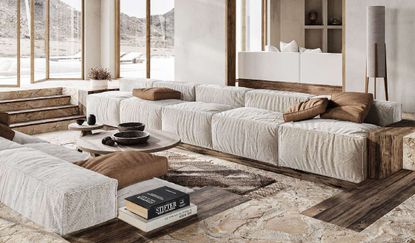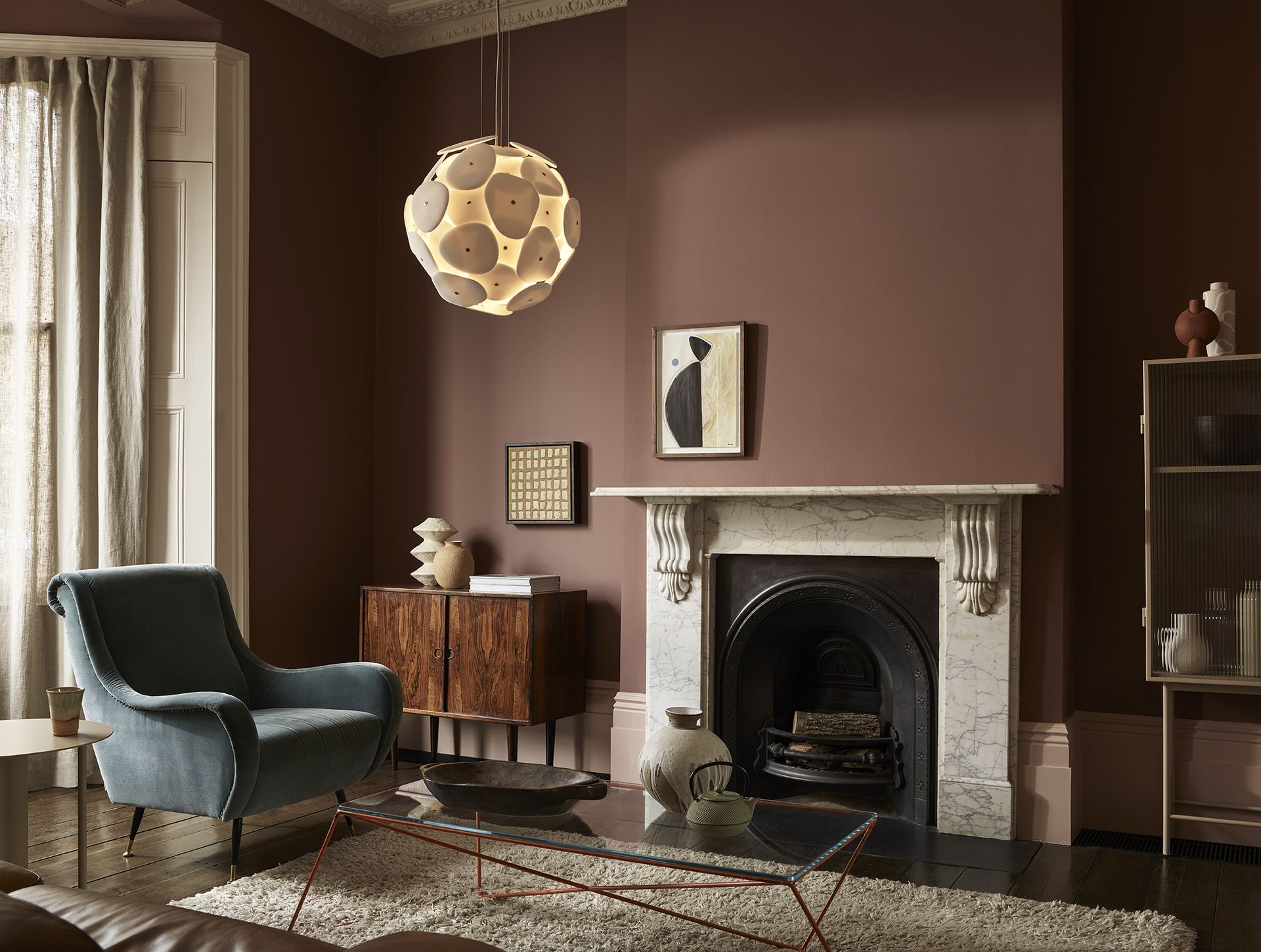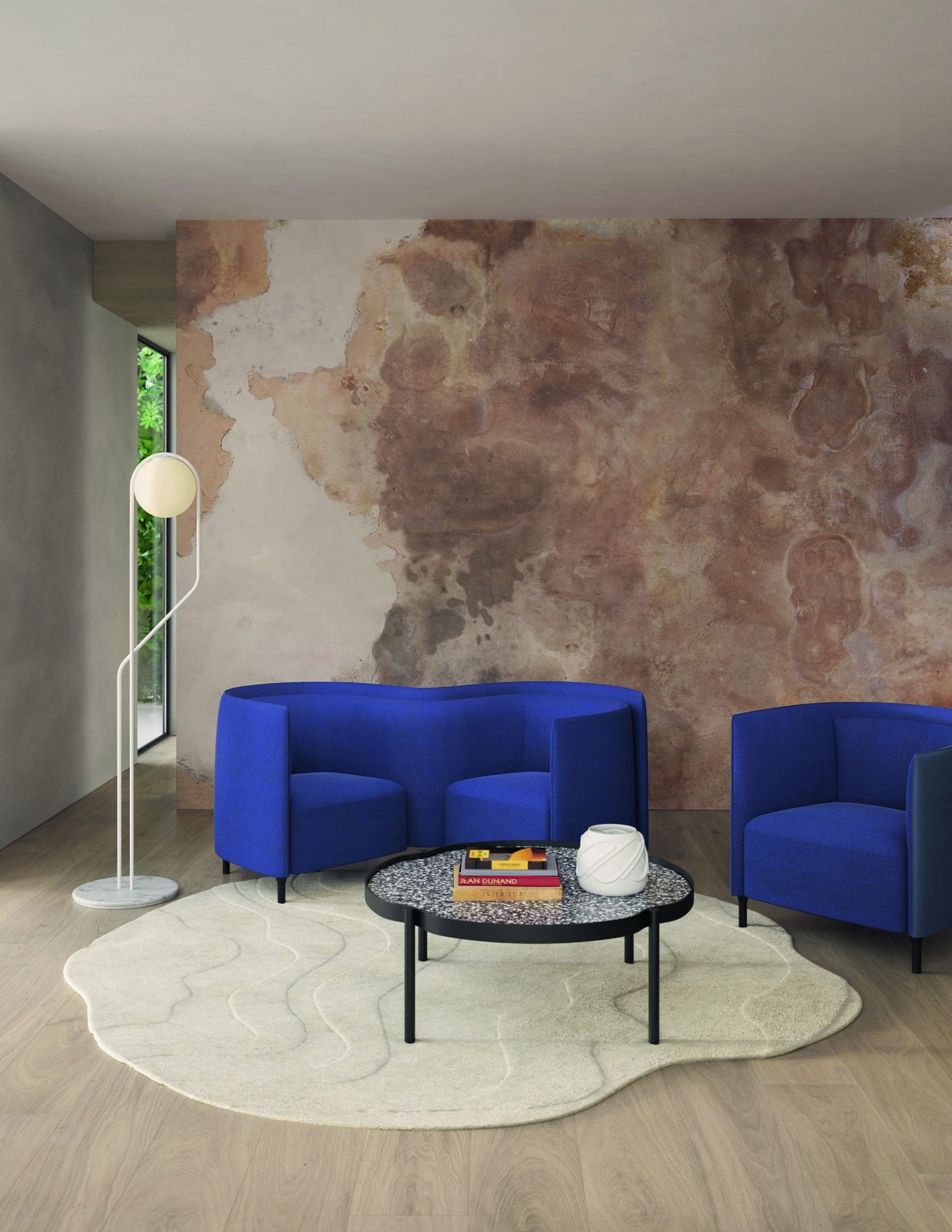Earth tone living rooms - the world's 10 most calming spaces that use design to connect us with nature
Earth tone living rooms help to give your decor a more grounded and timeless look. Design experts explain how to get them right


Earth tone living rooms are all about featuring warm colors that are comfortable to be in. Interestingly, the grounding tones of grey were quite the rage a decade ago when it was seen across interiors and even commercial spaces - everyone was using it as the new neutral. But just like all trends, the love and obsession for grey has moved on, and now we look for undertones of it in other, warmer colors, known as earth tones. Just as neutral, but with a little extra flair.
Along with browns, moss greens, ochre, red, and orange make up the large palette of earth tones. The idea behind these colors stems from the visuals they create in our minds. Brown reminds us of the sandy beaches, grey reminds us of rocks and craggy cliffs, ochre takes us into the fields of wheat and freshly dug potatoes, and moss green to the natural pools and their grounds below.
'Earth tones are typically grounded in shades commonly found in nature, often shades of browns, greens, and blue-greys,' says Sarah Barnard, interior designer and LEED and WELL AP. 'One excellent way to compile an earth-toned palette is to look to nearby nature for inspiration. Beachy areas may have more sandy beiges, blues, and greens, while earth tones inspired by a forested area may consist of saturated greens, deep browns, and terracotta tones. While a typical earth tone palette is grounded in brown tones, punctuations of brighter colors found in nature, from mustard yellows to floral pink hues, can help to introduce vivid moments of color.'
If you love tactile schemes, grounded living room ideas, and muted interiors where materials and colors complement each other, then this trend is for you. Take a look at our selection of ideas and choose the ones that speak to you the most.
10 earth tone living rooms to help you design a calming home
1. Paint the walls brown

Zulu Mask, a warm tone of brown, from Andrew Martin
If you crave a peaceful feeling in your living room color ideas, then you will be drawn to brown wall paint. Rich and warm, it can create a serene vibe and look much more interesting as a neutral, as compared to white or cream.
The color is a good mix of orange, red, rose, or yellow with slight black undertones. From espresso, and mocha to cappuccino, the tones of brown can vary, depending on your choice. But if it's a close-to-nature hue you're looking for, go for a brown living room with grey undertones. Look to animal fur, bark, dirt, or dry leaves for color inspiration.
'In a brown living room, earthier jewel tones such as amethyst, citrine, garnet, and lapis can lend a bold shot of color without overwhelming,' says Reena Sotropa, founder of Reena Sotropa In House Design Group.
2. Design a wood-dominated interior

Of course, just a simple lick of paint can feel flat if you're trying to design the most authentic earthy living room. If redesigning the living room in your holiday home is on the cards, then a style like the one pictured above could work for you.
To stop your room from looking too plain or drab, enhance the textural appeal of the space. Think of rough and craggy to subtly nubby and smooth surfaces. Introduce different types of wood, be it driftwood, teak, or veneers for color and surface variety. Pampas grass and cane lights too can induce all the browns you're looking for.
And, if nothing else strikes, another effective way to bring the colors of the earth into your living space is by collecting your natural treasures and displaying them. Pieces of bark, seedpods, feathers, and interesting rocks and shells can make for artful displays.
'Rich chocolate tones add an instant warmth and richness to the most minimal of living spaces,' says Reena. 'Tones of tobacco and cognac transform light airy rooms into warm and liveable family spaces.'
3. Introduce a complementary scheme with moss green and tan tones

When you think of green, what nature-inspired elements come to mind? Think freshly mown grass, the new shoots of young onion plants, the moss around natural pools, or those stubborn greens that emerge out of stone buildings. Green is the most natural, soothing, and calming tone, and several colors go with green in interior design.
A great friend to green is brown – and organic pairing seen in nature. The two together can create the most appealing setting, one that makes you feel you've settled in the outdoors, lying on the grass, surrounded by tall trees, with thick trunks.
Another great way to use green is through olive greens, paired with dusky pink. These hues have a rich, historic feel that works especially well in older homes with traditional details.
'Muted earthy greens paired with neutrals add an organic element into a living room setting,' says Reena. 'Also, a beachy palette of soft sea blues and driftwood greys can give living rooms a serene and calming aesthetic.'
4. Create a calming interior with beige

Perhaps the biggest irony in the world of colors is the reputation that beige has. Overused and yet undervalued. Have you ever heard anyone say beige is their favorite color? Yet the hue dutifully makes its way into our interiors and keeps things running smoothly. Ah, the tragedy!
Truth is, boring old beige isn't boring, especially if you're creating an earthy scheme. This is one of the default hues in interior design. It helps create an even tone because it's so much warmer than the stark white. It can even make a room feel restful and sleepy. With its yellow undertones, it truly is a neutral for all seasons.
Layering beiges with other soft tones like cream can make you feel like you're walking in the warm fields with the sun shining above. Such is the textural richness of this tone. The color works particularly well with wood elements and helps uplift the subtle beauty of natural things.
Plus, it is steadfastly modern so it won't pull your scheme down. Beige living rooms look refined and lovely and open up other color possibilities. In short, it has our vote!
5. Choose rust tones for a grounding effect

Clay colors can be both warm and spicy, but overall are much easier to live with than brighter, bolder reds. These have a touch of brown that helps them tone down, making them feel cozy and convivial.
A great way to use rust, apart from paints is through tiles. If you're up for living room flooring ideas, then terracotta tiles could be a good candidate. These will give your space a touch of trad and lift the color scheme from the ground up. Plus, just the thought of them will transport you to Spanish Revival or Mediterranean-styled homes.
Apart from paints and flooring, you could even induce this color through terracotta pots, coffee tables, or accent wall tiles. The introduction of this baked earth element will truly create the ideal indoor-outdoor feel you're looking for.
6. Bring in a slice of the setting sun with ochre

India Yellow, Farrow & Ball
For that sun-kissed feeling, there's no better color than ochre. It is warm and earthy and has that ancient feel to it. The color can be both pale or dark, or almost brown. Since it is an earthy hue, it works fabulously well with burgundy red and cool greys. Plus layering a scheme with ochre can be quite fun. Think heavy velvety fabrics and brocade. There you have it. A rich, glittering scheme that reminds you of the opulent resorts of Marrakech.
Use this mature hue to give your elegant living room gravitas. There is something distinguished and comforting about this color. If committing to a wall color like this isn't up to your taste, use ochre in upholstery, or accessories.
7. Let pebble grey wash over your space

It's true – there really are 50 shades of grey (more or less!). But choosing the right tone can be tricky.
But then again, there's nature for inspiration. Think of the pebbles, large beach rocks, and mountains that very naturally don this hue. You're looking for a medium to light grey to help converge your space into a soothing, cocooning one. If a beige-grey seems too taupe, you could consider Gray Horse 2140-50 by Benjamin Moore as a good example for the right shade. Plus, many colors go with grey.
'Our projects always include a palette of beautiful natural materials: stone, marble, reclaimed wooden boards, and sisal, always complemented with a backdrop of muted, earthy paint tones,' says Tom Cox, founder of HÁM interiors. 'We like to look at the pigment and depth of color in a paint, too often a shade will have too much grey or brown as undertones which can then be challenging when adding the layers of furniture and finishing touches. We prefer the warmer tones of these hues.'
8. Consider a pop of burnt orange

A burnt orange will remind you of the evening sky, as the deeper blues get punctuated with the burning setting sun. Orange is a bold color but it's so impressive, isn't it? If you have a bold personality and love to overawe people with your design choices, this could be the color for you. Plus, it has natural roots so you can be sure your home won't look too stark and OTT.
Ideally, a burnt orange should be used with restraint, simply because it has such a big presence. You just need a touch of it to create drama. Consider an orange living room furniture piece or a rug. Even an accent wall will do.
'Because earth tones are so complimentary, mixing and matching can create a calming atmosphere that brings about connotations of nature. Earth tones also work well with a range of neutrals, and saturated earth-toned accents can brighten a more neutral or minimal design to create focus and enliven a living room space,' says architect Sarah Barnard.
9. Add a touch of red

We're thinking red bricks, roses, tomatoes, and spices. All the colors that originate from the earth. What images come to mind for you when thinking of red?
This color makes an impact and leaves a lasting impression. It's a bold color choice and so requires careful consideration. For living room curtain ideas, consider red for just a touch of the hue. You can also introduce it through fabrics such as pillows and rugs. Even red artworks in an essentially brown or beige scheme can work.
Red works in all sorts of decorating styles, from sleek modern to country. Choose deeper shades of red with brown undertones for a more earthy effect.
10. For the ultimate rustic look, go for distress walls

Now, this look may not be for everyone but if you are impressed, then no matter how modern your home may be, distressed finishes can give your home the look of age. A faux aged surface has loads of charm and character and gives spaces an antique look. Take a look at this image and think – doesn't it look like a grunge room inside an old warehouse? The broken brown wall makes you think of the outdoors.
If a rough surface treatment like this isn't for you, you can achieve the same with a living room wallpaper that can look just as authentic. Even an exposed brick wall can have the same effect.
What colors are considered earthy?

Earth-toned colors are a big movement in interior design as they point toward the natural world. The essential feature of these colors is that they need to have a natural, calming vibe to them, help create a cozy living room, and remind one of the outdoors.
The palette largely consists of rust, marigold, ochre, pebble grey, sienna brown, burnt orange, terracotta, and moss green. Of course, with a wide variety of paint tones available today with brown and grey undertones, the choices in earth tones are wider.
How can I make my room more earthy?
There are several ways to make the living room more earthy. Paint colors of brown, light grey, ochre, marigold, sage and moss green, and terracotta can help conjure a natural space. Apart from this, you can bring in natural elements such as wood, jute, cane, and brick to concrete to create a grounded interior.
Plants too help create a scheme that reminds one of the outdoors. Choose large, leafy varieties that are reminiscent of tall trees. Bonzai's, climbers, and small fruit plants can create a similar vibe.
Ground your living room with worn & weathered pieces, distressed finishes, and rust elements for a more rustic vibe.
Be The First To Know
The Livingetc newsletter is your shortcut to the now and the next in home design. Subscribe today to receive a stunning free 200-page book of the best homes from around the world.
Aditi Sharma Maheshwari is an architecture and design journalist with over 10 years of experience. She's worked at some of the leading media houses in India such as Elle Decor, Houzz and Architectural Digest (Condé Nast). Till recently, she was a freelance writer for publications such as Architectural Digest US, House Beautiful, Stir World, Beautiful Homes India among others. In her spare time, she volunteers at animal shelters and other rescue organizations.
-
 The 12 Best Table Lamps for Reading —I'm a Certified Bookworm (and Shopping Expert)
The 12 Best Table Lamps for Reading —I'm a Certified Bookworm (and Shopping Expert)When it comes to table lamps for reading, I don't mess around. If you're the same, this edit is for YOU (and your books, or course — and good recommendations?)
By Brigid Kennedy Published
-
 "It's Scandi Meets Californian-Cool" — The New Anthro Collab With Katie Hodges Hits Just the Right Style Note
"It's Scandi Meets Californian-Cool" — The New Anthro Collab With Katie Hodges Hits Just the Right Style NoteThe LA-based interior designer merges coastal cool with Scandinavian simplicity for a delightfully lived-in collection of elevated home furnishings
By Julia Demer Published

